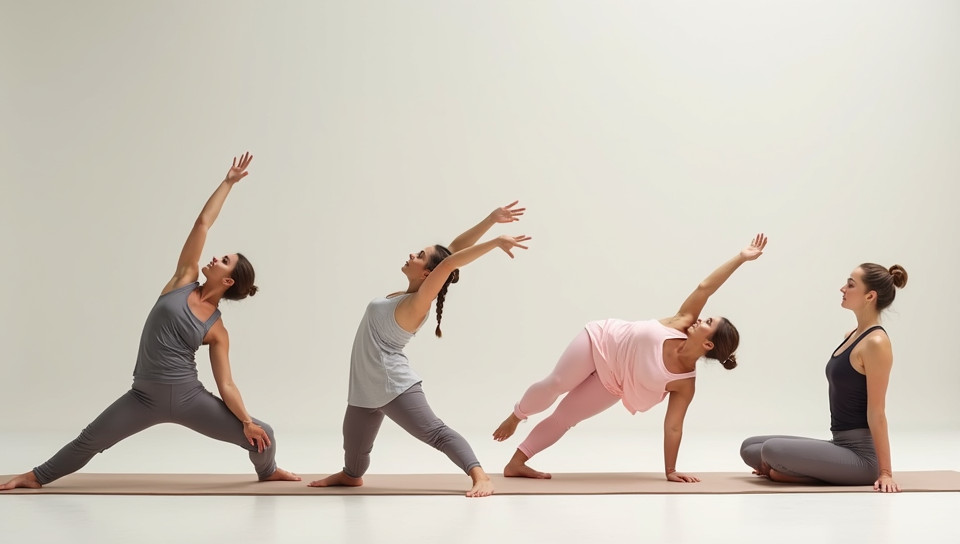Different yoga styles may use various props and equipment 90%

The World of Yoga: How Props and Equipment Enhance Your Practice
As you step onto your yoga mat, you may notice that the instructor is using various props and equipment to support students in achieving specific postures or modifying existing ones. From blocks and straps to bolsters and chairs, these tools can greatly enhance your practice by allowing you to access deeper stretches, build confidence, and prevent injuries.
The Benefits of Using Props in Yoga
Props are designed to assist students in their yoga journey, providing support and adjustments that can be tailored to individual needs. By using props, you can:
- Reduce strain on joints and muscles
- Improve alignment and form
- Increase flexibility and range of motion
- Enhance balance and stability
- Modify postures to suit different levels of practice
Popular Props Used in Yoga Classes
Each yoga style may incorporate a unique set of props, but some popular ones include:
Blocks
Blocks are small, rectangular pieces of foam or wood used to support the hands or feet in various postures. They can help students achieve proper alignment and reduce strain on their joints.
Straps
Straps are long, flexible straps made of fabric or rubber that provide additional support for arms, legs, or torso. They can be used to deepen stretches, improve balance, or modify postures.
Bolsters and Pillows
Bolsters and pillows are designed to provide support and comfort during restorative yoga practices. They can help students relax, release tension, and rejuvenate their bodies.
The Impact of Props on Yoga Practice
Using props in yoga practice can have a profound impact on both physical and mental well-being. By incorporating props into your routine, you can:
- Reduce stress and anxiety
- Improve overall flexibility and mobility
- Enhance body awareness and self-care
- Increase confidence and self-esteem
- Deepen your spiritual connection to the practice
Conclusion
The use of props in yoga is an essential aspect of many styles and can greatly enhance your practice. By understanding how props work, you can unlock new depths of flexibility, balance, and relaxation. Whether you're a seasoned yogi or just starting out, incorporating props into your routine can revolutionize your approach to yoga and lead to a more fulfilling and transformative experience on and off the mat.
- Created by: William Davis
- Created at: Aug. 23, 2024, 10:24 p.m.
- ID: 8044

